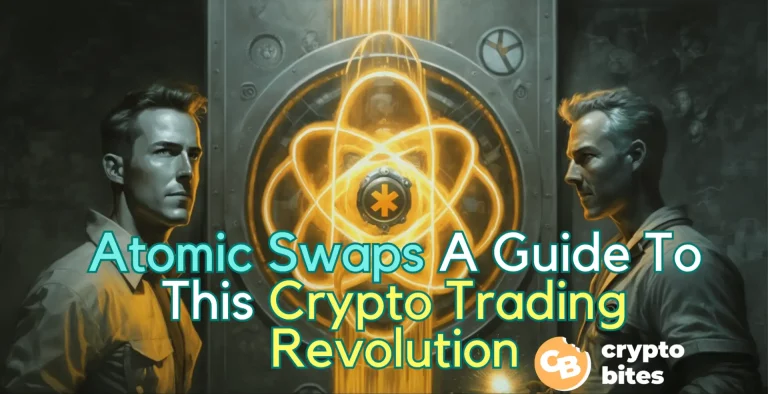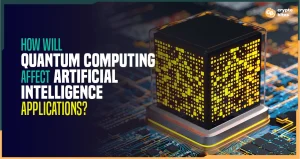
Atomic Swaps: A Comprehensive Guide to Revolutionizing Cryptocurrency Trading
Imagine a world where you can securely and seamlessly trade cryptocurrencies without the need for a centralized exchange or middleman. A world where you have complete control over your assets and transactions. Enter the realm of “atomic swaps.”
In this comprehensive guide, we’ll explore the world of atomic swaps, taking you on a journey from their inception to their potential impact on the future of cryptocurrency trading. Here’s what you’ll learn:
Underlying Technology: Discover the backbone of atomic swaps and how they function.
Advantages: Uncover the benefits of using atomic swaps over traditional methods.
Challenges: Delve into the limitations and obstacles atomic swaps face.
So, buckle up and get ready to dive into the fascinating world of atomic swaps, where the power of blockchain technology is being harnessed to revolutionize the way we trade cryptocurrencies.
What Are Atomic Swaps?
Atomic swaps are decentralized protocols that let you securely exchange one cryptocurrency for another without any intermediaries. Using smart contracts, atomic swaps guarantee that both parties fulfill their obligations during the trade, sticking to the agreed amount, exchange rate, and timeframe.
Currently, trading cryptocurrencies typically involves centralized exchanges, which act as intermediaries for blockchain transactions. Unfortunately, these exchanges have risks such as hacking and high transaction fees.
Atomic swaps were created to overcome these issues presented by centralized exchanges. With no centralized authority storing the funds or supervising the transaction, atomic swaps are trustless and secure, reducing the risks of hacks, thefts, and system crackdowns.
A Brief History Of Atomic Swaps
Tier Nolan first introduced the concept of peer-to-peer swaps in 2013, proposing the use of hash time-locked contracts (HTLCs) to enable safe cross-chain trades between various cryptocurrencies.
Fast forward to 2017, when Charlie Lee executed the first atomic swap between Litecoin and Decred, employing AtomicDEX technology. Since then, atomic swaps have surged in popularity, addressing the challenges of traditional centralized exchanges.
How Atomic Swaps Work-Technical Overview
Atomic swaps occur between two traders who agree to trade their tokens for an agreed amount. Once the smart contract verifies the agreement, it initiates the trade, records the blockchain transaction, and validates it through network nodes. These swaps are irreversible; to trade the same tokens again, both parties must agree to a separate transaction.
Hashed Timelock Contracts (HTLCs) and time-locked transactions are two core concepts in atomic swaps.
HTLCs are smart contracts in blockchain systems that support trustless transactions between parties using time locks and cryptographic hashes, while time-locked transactions only validate after a certain time has passed.
Hashed Timelock Contracts (HTLCs)
These are smart contracts in blockchain systems to support trustless transactions between different parties. The technology runs on two ideas, time locks, and cryptographic hashes. These two concepts ensure only completing a transaction when certain conditions are achieved.
HTLCs are used in payment channels and cross-chain trades. They help two parties to get involved in trade without knowing each other. Besides, they prevent the parties from relying on a third person or institution when conducting a transaction.
Time-locked Transactions
These transactions don’t validate until a certain time has successfully passed. The sender often sets a time before a transaction can be easily confirmed. The set time limit is often represented in blocks.
Time-locked transactions have many use cases. For instance, they facilitate low-cost and fast micropayments. They facilitate secure transactions by preventing the exchange of funds without the agreement of the parties involved.
The receiver can redeem the funds only after presenting a preimage that matches the given hash. The funds are returned to the sender when the receiver fails to present the preimage within a set timeframe.
This practice eradicates the risk of the counterparty.
Advantages of Atomic Swaps
Here are some primary advantages of atomic swaps:
- Decentralized and Trustless Nature: This quality helps traders perform wallet-to-wallet and direct transactions without losing control over their exchanges and accounts.
- Security and Privacy: Atomic swaps use HTCL contracts that provide excellent assurance and security. Senders can receive their currency back in case of any conflict or delay.
- Cross-chain Compatibility: This feature helps traders conduct transactions without relying on any third party. As a result, it creates a trustless way to exchange one currency for another.
- Lower Fees and Reduced Counterparty Risk: Atomic swaps reduce operational costs because parties trade independently. There are no trading fees involved that centralized exchanges often charge. Besides, the risk of one of the parties defaulting on any contractual obligation also falls.
Types of Atomic Swaps
There are two different types of atomic swaps.
On-Chain Atomic Swaps
These swaps help conduct cross-chain trading executed directly between two coins and blockchains. This swap offers a high-security level because the transaction occurs on the blockchain.
Unfortunately, these swaps are not compatible with all blockchains on a network. They are a relatively new technology, and their compatibility can only increase as more currencies adopt HTLCs. However, these swaps work for Bitcoin Cash, Decred, Litecoin, and Vertcoin at the moment.
Off-Chain Atomic Swaps
This swap occurs on a secondary level and supports bidirectional channels for payments. These swaps happen quite quickly. However, they are complex and should be developed properly before use.
Since the off-chain atomic swaps face limitations regarding scalability, the Lightning Network technology has a promising role to play. This technology reduces transaction costs between two parties and helps them conduct smoothly without announcing to the entire network.
This technology supports parties in creating their own individual channel on a given blockchain. This allows them to conduct as many transactions as they want without broadcasting them. The channel only closes when the two parties have finished trading and settled the balance.
Lightning Networks are faster than on-chain atomic swaps. Besides, they offer excellent scalability and charge low fees.
Implementing Atomic Swaps
The implementation of these swaps can be quite crucial. The cryptocurrencies involved must support smart contracts. Besides, the parties must also have access to the tools and necessary software.
Wallet Integration
Wallet integration is a key aspect of atomic swaps, allowing one to complete a transaction using the cryptocurrency wallet. It also provides a user-friendly and seamless trading experience to exchange currencies via atomic swaps.
When integrating a wallet, here are some steps to follow:
- Select an appropriate wallet. For instance, wallets like Atomic Wallet, Edge, and Exodus are the most popular.
- Once that’s done, install the wallet on a device. Follow all the instructions that appear on your screen and make sure that your account is secure.
- Set the wallet for any configuration. Enable the Atomic Swap option on your wallet. This step is necessary to link the wallet to any platform supporting the exchange.
- Select the cryptocurrencies that you wish to trade. Make sure that your wallet supports these currencies.
- Initiate the swap and monitor it until the transaction is complete.
- Once it is done, let the wallet settle the transaction on the network.
Atomic Swap Platforms
Many atomic swap platforms are available, each with pros and cons. Here are a few:
- AtomicDEX: This is a decentralized exchange and supports 100 currencies for an atomic swap. The exchange is well-made but has certain technical complexities with a lengthy initial setup.
- BarterDEX: This exchange supports 250 cryptocurrencies for an atomic swap. It is a robust platform but has some inherent risks and can also be hard to set up.
- SwapReady: SwapReady is a user-friendly exchange. But it has liquidity issues and comes with technical complexities. One can only use it with a prior understanding of atomic swaps and private keys.
- Ethereum Atomic Swaps: This protocol only facilitates a swap between ERC-20 tokens and Ethereum. However, it is a trustless platform that initiates fast and seamless transactions.
Limitations and Challenges
Atomic swaps have many benefits. However, some important limitations should be addressed:
- Blockchain compatibility issues: An atomic swap can’t occur without blockchain compatibility. Since there aren’t many networks compatible with this practice, many traders don’t get the chance to benefit from the swap.
- Liquidity Concerns: Liquidity issues may arise if both parties have significant differences in the amount they wish to trade. Atomic swaps only facilitate trade with the same amount of cryptocurrencies.
- Scalability and transaction speed: Since atomic swaps are complex to implement, there are many issues regarding their scalability. The swaps only happen after several steps are completed leading to network congestion and delays. Besides, some networks have low transaction speeds, further slowing the process.
Future of Atomic Swaps
While atomic swaps are quite popular now, do they have a future?
We’d say that they do. Atomic swaps have many advantages and are much better than traditional exchanges. There are many reasons why these atomic swaps can become our future.
Growing Adoption
The world of cryptocurrency is growing at a fast pace. Since atomic swaps are a part of that ecosystem, there is no denying it when it comes to their acceptance and development.
Increase In Compatible Blockchains
In the future, atomic swaps are expected to be compatible with more blockchains. Many blockchain networks have established wallets and interfaces to accommodate atomic swaps.
Besides, now protocols like Atomic Multi-Path Payments over Lightning help swaps between currencies with new or uncommon hashing algorithms. This practice will make it easy for a common user to perform atomic swaps, contributing to their growth.
Integration with Decentralized Finance (DeFi)
Decentralized Finance is slowly becoming popular and contributes to the quick adoption of atomic swaps. Since DeFi applications help users to connect and use financial services without middlemen, atomic swaps fit perfectly in this setup. They enable simple and secure transactions between various currencies.
Technological Improvements
Atomic swaps have gone through amazing technological improvements since their launch. These advances have made them more transparent, quick, and secure.
Faster and More Secure Protocols
Lightning network integration in atomic swaps enables quick transactions with a very low fee. There are many protocols integrated with this network, contributing to fast swaps.
Another lesser-known technological advancement is Hardware wallet integration. This technology adds an additional security level and makes protocols more secure than before.
These advancements promise to make atomic swaps more secure and safe, increasing their adoption and acceptance.
Enhanced User Experience
Since atomic swaps are complex to process, the development of user-friendly interfaces are enabling people to execute a transaction within a few clicks. In addition, the growing development of mobile wallet integration promises to make swapping as convenient as ever. With the help of this technology, you can easily swap currencies while on the go.
Conclusion
It is safe to say that atomic swaps are the future of trading. Since they don’t involve a third party, these swaps are fair, transparent, fast, and affordable.
With technological advancement, atomic swaps can easily take over centralized exchanges within a few years. Moreover, since they promise to be user-friendly, their adoption by the common man is expected to be hassle-free.
If you trade or use cryptocurrency frequently, know that atomic swaps are a game-changer. However, there is still a lot of room for improvement, and with further exploration, they can be a source of comfort and ease during trading.




